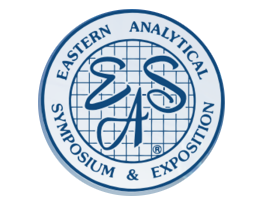HALF-Day Course
Wednesday, November 16, 8:30am-12:30pm
Dr. John Schneider, Argonne National Laboratory, Lemont, IL
COURSE DESCRIPTION
This half-day course will cover the basics of gas chromatography using infrared spectrometry (GC/IR) for detection. The basic configurations of GC/IR will be discussed including the light pipe interface, cryogenic trapping, and matrix isolation. Several applications will be covered including food/flavor analysis, forensics, and homeland security. The use of GC/IR data as complementary to GC/MS data will be discussed.
WHO SHOULD ATTEND
Organic analytical chemists currently using GC/MS. Chemists needing to analyze organic molecules in complex mixtures to determine structure. This includes chemists in the environmental area, food and flavor components, forensics, and homeland security.
TOPICS
1. Intro to GC/IR
2. Light pipe GC/IR
3. Crogenic trapping GC/IR
4. Matrix Isolation GC/IR
5. Currently available instrumentation
6. Applications – Food/Flavor
7. Applications – Environmental
8. Applications – Forensics/Homeland security
9. Conclusion
ABOUT THE INSTRUCTOR
John F. Schneider is an Analytical Chemist at Argonne National Laboratory (ANL). He is also an Adjunct Professor of Analytical Chemistry for the Illinois Institute of Technology. He has an MS degree in Analytical Chemistry from Northern Illinois University. He was part of a team at Argonne National Laboratory that invented GC/matrix isolation-FTIR, which won an R&D 100 award. This technique allows the analytes separated by capillary gas chromatography to be trapped in an inert matrix of argon or nitrogen and analyzed by Fourier Transform Infrared Spectroscopy. This technique produces high quality spectra of matrix isolated compounds that allows the identification of specific isomers that cannot easily be done by GC/MS. The sensitivity is superior to other GC/IR methods. His technical interests include, chemical sensor and sensor array development, field analytical chemistry, gas chromatography (GC), GC/IR, GC/MS, Solid Phase Microextraction (SPME), Chemical warfare agent analysis, and X-ray Fluorescence analysis for metals in the field.

